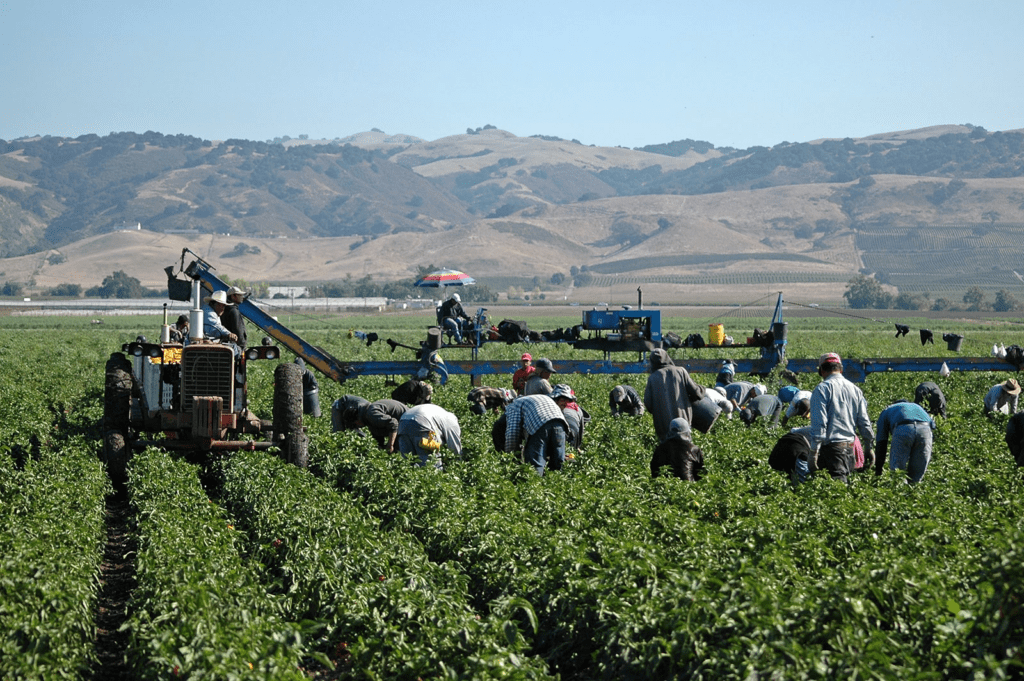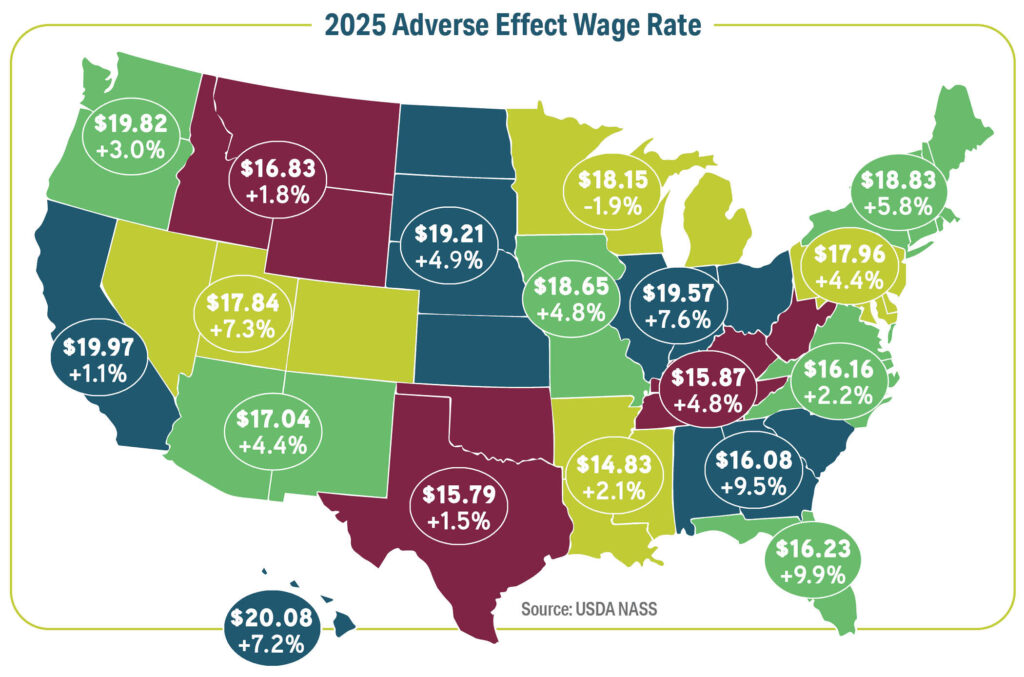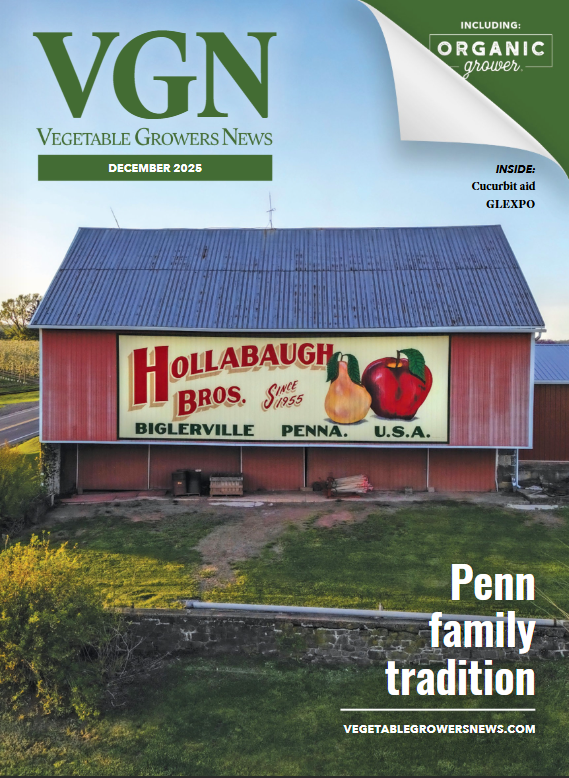
Jul 9, 2025Soaring AEWR costs: Adverse Effect Wage Rates harming growers
Along with other increasing input costs, growers are being slammed with double-digit increases in Adverse Effect Wage Rates (AEWR) rates.
This year, the combined national average field and livestock worker AEWR wage rate is $17.74, up from last year’s $17.55 and 12% higher than $15.56 in 2022.
AEWR and H-2A reform are viewed as critical to ensuring future sustainability of specialty crops, according to growers and grower organizations.
“We have reached a critical point with H-2A where the costs of the program, driven by rising wages, are leaving U.S. growers at a disadvantage to foreign competitors,” said Chris Butts, executive director of the Georgia Fruit & Vegetable Growers Association (GFVGA), which has spearheaded H-2A reform. “The time for meaningful reform is now, before we see growers who can no longer afford to participate in the program, which will drive more production outside the U.S.”
The H-2A program provides a legal, temporary workforce that growers across the country rely on to meet their labor needs, particularly as the domestic agricultural workforce continues to decline.
Varying rates
Hourly rates for workers performing agricultural labor from planting and harvesting to sorting and packaging vary by state. As of mid-2025, rates ranged from $14.83 to $16.23 in the Southern states, $18.15 in Michigan and Wisconsin, to as high as $19.82 in Oregon and Washington and $19.97 in California.
The increased rates are creating uncertainty in fields, orchards and vineyards. The volatility of the changing rates and rate increases make it impossible for growers to plan for labor in upcoming seasons, which is growers’ most significant input cost, according to grower organizations advocating for H-2A reform.
“The unpredictability and volatility of AEWR increases have made it extremely difficult for growers to budget and plan ahead,” said Jason Resnick, senior vice president and general counsel of Western Growers. “This uncertainty discourages investment and long-term planning, as growers cannot accurately predict labor costs year-to-year. It also exacerbates existing financial pressures, forcing growers to make difficult decisions about scaling back production, cutting jobs or forgoing participation in the H-2A program altogether. For an industry already facing labor shortages and increasing regulatory pressures, this volatility is unsustainable.”
Many growers are operating on razor-thin margins and cannot absorb the annual rising AEWR rate hikes without adjusting operations. Lawmakers in both parties have expressed concerns with consolidation and support for the continuation of the family farm, said Kate Tynan, senior vice president of the Northwest Horticultural Council (NHC), which is based in Yakima, Washington.
Tynan points to a 2024 NHC study that showed labor costs for Pacific Northwest growers increased by 127% between 2013 and 2023 while grower returns only increased 22%.
“In the last two years, labor costs have eaten up 70% and 99%, respectively, of a grower’s return,” Tynan said. “That is before any other input costs are covered —– leaving the most efficient of growers in the red.”
Florida growers continue to face significant challenges that threaten the long-term viability of fruit and vegetable production in Florida, and at the top of that list is the unprecedented shortage of U.S. workers willing to work on farms, said Christina Morton, director of communications for the Florida Fruit & Vegetable Association (FFVA).
FFVA is working with regulatory agencies, including the USDA and Department of Labor, to improve the AEWR methodology and expand access in pursuit of both short-term and permanent solutions. FFVA has asked Congress to immediately pause AEWR increases until a permanent wage mechanism is established, she said.
“Our growers tell us that the current AEWR methodology is simply unsustainable, and they are forced to make some tough decisions on the future of their operations as a result,” Morton said. “Growers in Florida saw a nearly 10% increase in the AEWR this year, 3% last year and 15% the year prior. What’s more, these volatile wage increases are announced in the middle of our growing season, after most of Florida’s contracts and prices have been set.”
Profits squeeze
Michigan’s AEWR rate declined 35 cents for 2025, the first rate of any to go down in many years. However, the overall number had already reached the tipping point a few years back, said Greg Bird, executive director of the Michigan Vegetable Council.
“There are farms that cannot financially afford to continue farming and use H-2A labor at the rates they are at,” he said. “Each year a few more acres are left out of our vegetable portfolio due to the AEWR rate.”
AEWR rates have been on a steady upward course, which businesses expect. When the numbers no longer make sense, businesses must make a choice, Bird said.
“We expect to lose a few more acres of vegetable production in Michigan,” Bird said. “The remaining will still use whatever labor is available, with a large part of that being H-2A. The 35-cent decrease may get a few people to 2026.”
Growers respect and rely on their employees and are committed to paying competitive wages and ensuring worker safety, said Bailey Fisher, federal affairs specialist in the Pennsylvania Farm Bureau’s Government Affairs and Communications Division.
“The mandated wage calculations outlined in the Adverse Effect Wage Rate make it hard for farmers to stay in business because of dramatic year-over-year increases,” Fisher said. “Wage increases often unintentionally harm the very people they are designed to help, as farmers who cannot absorb rising wages and administrative costs are forced to shift to less labor-intensive crops, more mechanized crops or even sell the farm. It should be noted that the mandated wage for migrant workers has grown much faster than the national average wage for most workers in America.”
Mike Townsend, president of Townsend Farms, a Fairview, Oregon, blueberry grower, processor and distributor, said the rising rates are harming fresh sales.
“It’s really hurting the fresh and frozen markets for blueberries — the fresh more than anything because the fresh is hand-harvested,” he said. “It’s hurting all sectors — apples, cherries, pears, anything hand-harvested. It’s decimating it.”
The H-2A program’s role in intensifying AEWR increases is indisputable, said NHC’s Tynan.

“In the five years between 2018 and 2023, the number of H-2A workers brought to Washington state alone has increased by more than 105%,” she said. “H-2A workers and those in corresponding employment now make up such a significant percentage of the workforce that H-2A wages are now the new wage floor for all growers in our region — regardless of whether they are participants in the program. When you take into account the other substantial costs associated with H-2A compliance, including housing, transportation and visa costs, the impact is overwhelming, and growers are going under.”
“The family farm is not only under threat, but in too many cases it is already gone,” she said. “We need to successfully convey the significance of the losses that our growers and rural communities have already suffered, and that any further delay in addressing this issue will only exacerbate the problem. It is not only an economic problem but also one of food security.”
Butts pointed to the bipartisan Agriculture Labor Working Group Report that came out of Chairman Glenn “GT” Thompson’s House Ag Committee as a favorable starting point and said he sees opportunities for reform this year.
H-2A reform is among the Michigan vegetable industry’s biggest priorities.
“The No. 1 priority is simply to have a vegetable industry workforce that allows Michigan to remain a national leader in vegetable production,” Bird said. “And currently the vegetable industry workforce is not allowing us to do that.”
To address the current challenges of AEWR, the agricultural industry must present a united front in advocating for change, said Western Growers’ Resnick.
“This includes providing lawmakers with clear, data-driven evidence of the economic and operational impacts of the current system,” he said. “It’s essential to highlight the ripple effects of volatile and rising rates, including the risk of outsourcing food production and undermining national food security. Collaboration with other stakeholders, including worker advocacy groups, can also help ensure a balanced and fair approach. Ultimately, any legislative effort will require strong bipartisan support and recognition of agriculture as a national priority.”
By Doug Ohlemeier, Assistant Editor


















